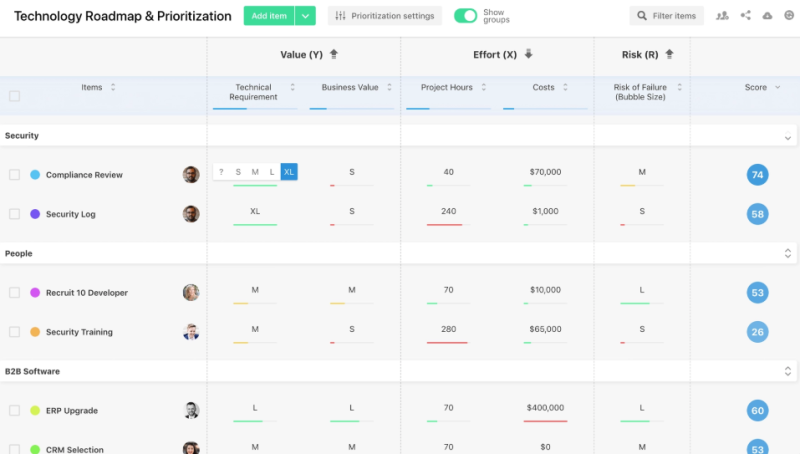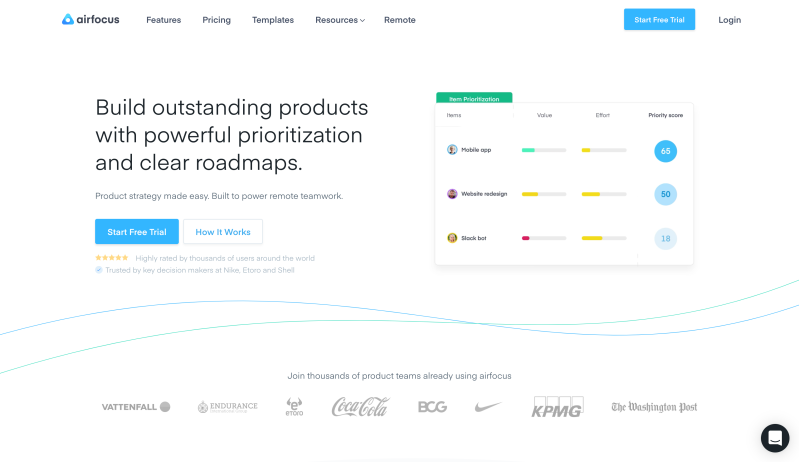Handling Hypergrowth as a Product Team: How To Scale Without Breaking

“Growing pains.”
“What doesn’t kill you makes you stronger.”
“When the going gets tough, the tough get going.”
What do all of these seemingly throwaway sayings have to do with product management, you ask?
If your team has ever experienced the ‘hypergrowth’ phenomenon, you already know.
At the earliest stages of life, businesses change and grow faster than at any other point — especially in the realm of digital products like SaaS.
The tactics and team structures that work well now might not be so effective in six months, and it’s up to your business to adapt.
This is the central challenge hypergrowth presents, and while it’s a great thing for your business — and your product — it can be tough on product teams.

With that in mind, let’s explore some essential tactics and strategies you can employ today to prevent your team from burning out (or breaking down) when experiencing hypergrowth.
First things first: What is hypergrowth, exactly?
Hypergrowth
While it may sound like a term from a sci-fi movie, hypergrowth is a very real phenomenon. It can happen at any stage of a company’s existence, but it’s most common during the startup phase and is typically the first real ramp-up in business growth.
Essentially, a company experiencing hypergrowth is growing at a rapid rate for specific key metrics — most commonly sales or revenue.
But hypergrowth isn’t a nebulous term; it’s actually a measurable, definable metric.
According to the World Economic Forum, a company experiencing hypergrowth has a Compound Annual Growth Rate (CAGR) of more than 40%.
The precise definition of CAGR can differ from business to business, but broadly speaking, it’s a solid measure of growth — provided the same metrics are used for comparison.
CAGR
CAGR may be defined by revenue, total sales, registered users, units delivered, and so on. The important part is that this metric represents real-world growth and can be tracked and compared directly over time.
For reference, most companies experiencing ‘normal’ growth will see a CAGR of 20% or less over a year. At more than 40%, it’s clear why the term ‘hyper’ very much applies to companies growing at this rate.
So how do you handle this breakneck pace of development? And how do you scale gracefully while maintaining happy customers and happy employees?
Let’s find out.
Why team structure matters most during hypergrowth
It’s somewhat ironic that rapid growth — a goal for many businesses — can also create significant risk.
Slow and steady wins the race, right?
That’s one way to approach the problem, but is artificially limiting the potential of your business ever a smart idea?
No. No, it’s not.
Rather, part of the solution to hypergrowth growing pains is to analyze your current team structure and ensure that it’s optimized for where you are today.
We’ll talk about how this structure might change as you scale later. But, for now, it’s about living in the moment and managing your active team structure, one day at a time.
Aligning your stakeholders for clear, concise communication
No matter how well a team works together, some level of tension is inevitable.
When it comes to a team of product managers working with a team of product engineers, the risk of tension is amplified — especially when people are quite new. And in a startup, everyone is quite new.
So, what do you do when tensions escalate, and you reach a log jam?
Who will be the person to make the final decision when two teams can’t agree?
How will you reconcile teams who simply can’t seem to get along and ensure they’re still pulling in the right direction?
Addressing questions like these before they arise is a great way to prepare for hypergrowth because the risk of such issues derailing your strategy is lowered significantly.
It’s here that communication plays a vital role — and it’s where tools like prioritization roadmaps can come in very handy.

Having tools like this are a great way to remove ambiguity from the conversation. When you have an objective measure, like a prioritization framework, telling you where to focus your attention, it can be tough to argue against that.
The end result? A defusal of tension and a clear route forward.
Whether you’re a product owner or a product manager, relying on a shared roadmap to which you’ve all agreed is the best way to ensure all stakeholders are aligned. (Need a pointer? Try the Product Roadmap Template from airfocus).
Establishing a reliable methodology for group decision-making
Once you’ve got your team structure in place, it’s time to think about decision-making.
One of the biggest stumbling blocks for any team is getting a total, 100% agreement on decisions from everyone involved. Sadly, this idea is something of a unicorn. So, when unanimous decisions simply aren’t possible all the time, what’s the alternative?
Well, with the right decision-making methodology, your team can reliably make the best call for the business — while still allowing everyone to feel heard and valued.
If the concept is new to you, we’ve got you covered. Here are some of our favorite group decision-making tools:
The RAPID model works by assigning everyone in a group a particular role. This reduces friction by making everyone feel like their opinion matters — no matter the outcome. It’s an initialism, with each letter standing for a different role in the decision-making process: Recommend, Agree, Perform, Input, Decide.
Priority Poker. At airfocus, we know exactly how tough it can be for large groups to come to a consensus. We know the issue so well, in fact, that we built a tool to resolve it. The Priority Poker tool in the airfocus platform allows a team to anonymously vote on particular tasks or issues. When all the votes are in, you’ll see how people really feel.
The RICE Framework. Here’s a methodology that’s very specific to the world of digital products. If you’re a product owner or manager, you’re probably already au-fait with the RICE framework, but if not, it’s a prioritization tool that breaks tasks down into four categories: Reach, Impact, Confidence, and Effort. If you’re having trouble making decisions as a team, applying the RICE model can help you see the wood for the trees, so to speak.
Watch our latest video on the RICE framework here:
https://youtu.be/miI6KvwFHLI
And here’s the real secret: each of these decision-making models should work just as well whether you’re 5, 15, or 50 people. Because, who knows, in hypergrowth your team could double or triple in months.
If you establish methodologies and frameworks with scalability in mind today, then you’ll be setting the scene for effective, collaborative teamwork well into the future.
Introducing flexibility into your role structure
If you’ve ever worked in a large organization, you’ll know that folks can get pretty territorial about their specific roles — especially at the executive level.
Whether that’s self-preservation at play, or something else, the reality is that ‘stepping on toes’ can happen once an organization hits critical mass.
But in the early days?
You should actively aim not to be precious about who’s doing what. Nurturing the ‘we’re all in this together’ spirit is an essential factor when it comes to pushing on through hypergrowth and becoming a stable, profitable company on the other side.

As you analyze your current team structure, consider introducing some flexibility to the roles your executive team is serving — especially if bandwidth allows.
For example, your Vice President of Engineering might be able to spend some time managing the Product team if the demands of the business call for it.
Take some time to talk to your key teams — including leadership — and ask them to be honest about where they’re spending their time. If you have anyone at the executive level with a lot of time on their hands, consider shifting them elsewhere — even to teams they may have little experience with.
The result will be twofold: the business gets a productivity boost by filling that otherwise wasted time, and you’ll be upskilling your employees.
When it comes to managing a cross-disciplinary team through hypergrowth, it’s really all about being flexible and agile.
(And, no, that won’t be the last time you’ll hear that magic word).
How to handle employee turnover within your hygergrowing product team
There’s another aspect to hypergrowth — one that might be something of a bitter pill to swallow.
Ready to hear it?
You will lose some good people.
For most tech founders, the idea of losing important members of the team is a painful thought.
After all, you’ve spent all this time building the business. Why would you want to let some of its best assets go?
The reality is that some people will go anyway.
Few areas of business are as fast-paced as tech startups. So, yes, there’s a very high chance that some of the best (and earliest) hires you make won’t last longer than 12 months.
That might sound like bad news, and you’d be forgiven for dreading it. But in truth? Understanding that these changes will happen can actually set you in good stead for hypergrowth.
Tech startup lifestyle
Organizationally, the people you need today might not actually be the same group you need in 6, 12, or 18 months. The people attracted to the tech startup lifestyle are an ambitious bunch, so it’s not surprising that they’ll want to seek out new pastures once they’ve made their mark on your digital product — but that’s no reason to be downhearted.
This arrangement can actually work out very well for both parties.
You’ll benefit from having the very best people working on your product from day one, and they’ll benefit from a sense of flexibility, and balance few other roles can offer.
They’ll also feel free to explore other opportunities as and when they arise. (Paradoxically, you might find that offering this freedom actually makes them more likely to stick around).
Hypergrowth is an unusual time for any business, so it’s only natural that it also calls for some unusual strategies.
Building in scope for the loss and backfill of key roles to your product roadmap might seem slightly odd in a regular business but during hypergrowth? The rules are all different.
With that in mind, it’s important to understand that some tough decisions might need to be made — but it’s all for the greater good.
One of those tough decisions may strike fear into the heart of any employee: the fateful org restructure.
Reorganizing your company structure: the secret sauce of hypergrowth management?
There’s a word all product teams will be familiar with: agile.
In most professional contexts, this refers to the agile model of product development. But when it comes to hypergrowth, it can mean something different.
Just as kids are forced to change their wardrobes as they grow up, so too does a business need to restructure its organization to account for scalability.
In the case of hypergrowth, you can expect such org restructures to happen at least every 12 or 18 months — and for good reason.
Structure shifts have negative connotations, and understandably so, but in the case of the hypergrowth phase of a startup, they’re essential to growing the right way.
For example, if you had a team of 12 half a year ago, and you now have a team of 120, the processes you once followed are probably now bursting at the seams. It’s here that a reorganization can have a transformative effect on the whole enterprise — freeing up bandwidth, rewarding hard work, and ensuring everyone is working as effectively as possible.
So how do you get it right?
A (very) brief guide to managing your first re-organization
There’s no doubt that reorganizing your org structure is a solid way to remain ahead of the curve when it comes to growth. Scaling is never easy, but being unafraid to shift your organization around when the conditions call for it is a powerful asset.

But how do you actually do it?
If you’ve never reshuffled your organizational structure, here are our top tips to make it work for your business.
Understand (and document) the rationale. Are you changing your organizational structure because you believe it’ll genuinely help the company? Or are you doing it because you feel it’s what you should do? Regardless of your initial answer to this question, it’s a good idea to start by documenting your rationale for your decision. You might even decide it’s not the right time — and that’s fine, too!
Review your existing structure and decide on required changes. The next step in the process is to review, in detail, exactly what’s working (and what isn’t) in your current structure. Are your product teams too siloed? Do you have a C-suite who are overburdened and lacking time? Is there too much tension between dev and engineering? During hypergrowth is the best time to identify and act on these issues to help you alleviate the growing pains and futureproof success in years to come.
Bring in your leadership team and get approval. Before you implement any changes, you should get buy-in from your leadership team. This is also a good opportunity for them to point out any problems you might have missed and give you a chance to massage the re-org strategy.
Announce the re-organization well ahead of time in a reassuring way. Nobody really likes to hear the word ‘reshuffle.' Luckily, assuming you’re not laying anybody off, this is actually a positive step — so be sure to frame it that way. Give your whole team at least a month’s notice before making the changes, and communicate all of the shifts in detail, in writing.
One final thing to remember: during hypergrowth, your company might change almost entirely two or three times, so what you learn from one reshuffle will help you in the next.
Like all things in life, this is a learning experience.
Are you experiencing hypergrowth? Keep it all together with the power of airfocus
Hypergrowth is a bit of a double-edged sword.
On the one hand, you’re growing — and that’s always great news! On the other hand, you have to balance team communications, rapid staff turnover, and several different systems — all of which are under strain. So how do you keep all of these plates spinning without crashing down to earth?
The answer is simple. The answer is airfocus.

Designed from the ground up by product teams for product teams, the airfocus platform is a visual roadmapping and prioritization tool that helps you stay on track even during times of rapid growth.
airfocus gives your product team a single source of truth for all of your projects. Not only that, but it allows you to itemize and prioritize all of your tasks and leverage scientifically proven models to help tackle them in the right way. Whether you’re a product team working on backlog refinement or a marketing team planning out a product launch, airfocus can help.
And, because it’s built to scale, it’s the ideal tool for navigating the exciting, uncertain waters of hypergrowth.
Want to discover the power of a platform that grows with you? Sign up for airfocus today!

Malte Scholz

Read also



Create effective product strategy

Experience the new way of doing product management




